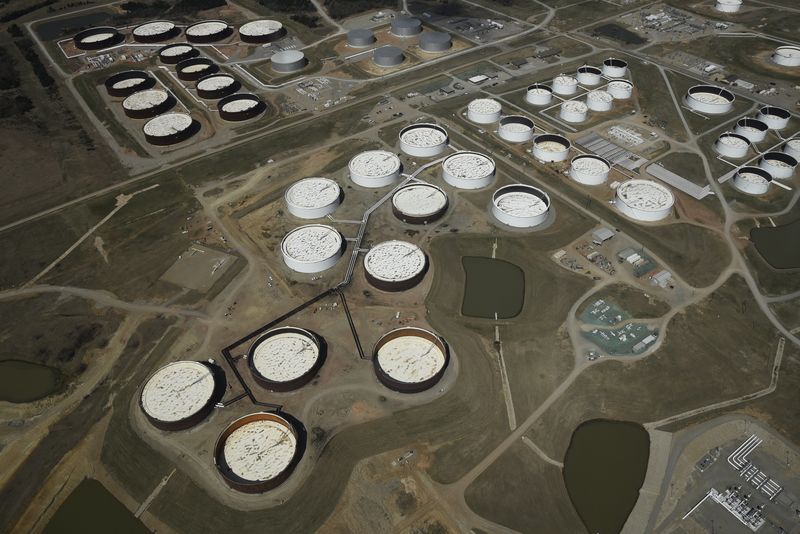(Bloomberg) -- The International Energy Agency is the only one of the three major oil forecasting organisations that sees global inventories increasing in 2019. The latest outlooks from the U.S. Energy Information Administration and the Organisation of Petroleum Exporting Countries both show worldwide oil stockpiles falling this year, assuming that total OPEC output remains at April’s level for the next eight months. The IEA sees a very small increase.
If OPEC countries continue pumping at the April rate of just above 30 million barrels a day, worldwide oil inventories will fall by about 450,000 barrels a day over the course of 2019, according to the EIA and OPEC. That’s a drop of just over 160 million barrels, or approximately 1.6 days’ of global consumption.
The size of the expected global oil stockbuild this year has been dwindling as OPEC countries, led by Saudi Arabia, slashed output and U.S. sanctions undermined production in Iran and Venezuela. In April, monthly reports from all three agencies saw an oil-supply deficit this year, but the IEA’s outlook has shifted as it factors in much lower-than-expected oil demand in the first quarter. In its May 15 report, it now assesses that the world used 440,000 barrels a day less oil in the first three months of 2019 than it thought a month earlier and has made smaller downward adjustments to its forecasts for the rest of the year.
The IEA has also increased its forecast of non-OPEC production growth for this year, raising it by 130,000 barrels a day, while both the EIA and OPEC have trimmed their projections. This has had the effect of narrowing the spread between the views of the three agencies, which are converging toward a consensus increase of nearly 2.1 million barrels a day in non-OPEC output this year, driven by continuing expansion from the U.S.
The EIA has cut its forecast of non-OPEC output growth by 340,000 barrels a day since February’s report. The biggest reduction has been in the OPEC non-crude liquids, which are excluded from the OPEC+ output agreement to cut supply and are therefore usually included in non-OPEC production figures. The reduction probably reflects the impact of U.S. sanctions on exports of Iranian condensates, a light form of crude extracted from gas fields, which were previously shipped to South Korea.
The changes to supply forecasts come against a backdrop of weakening demand outlooks. All three agencies have trimmed their forecasts of global oil demand growth in 2019 since the beginning of the year, cutting it by an average of 120,000 barrels a day since January. Even so, growth remains relatively robust at between 1.2 million barrels a day (OPEC) and 1.4 million (EIA).
The latest cut in the IEA’s forecast of oil demand growth this year may raise some concerns, though. Although the forecast for the year as a whole has only been trimmed by 90,000 barrels a day, all of that has come from a big reduction of 440,000 barrels a day in its assessment of first-quarter demand, with downward revisions for countries including China, Japan and South Korea. Although the IEA believes that “slower demand growth is likely to be short-lived,” the deepening trade dispute between the U.S. and China may lead it to alter that view, if the current stand-off drags on. In that case, subsequent quarters may also see significant downward revisions to demand estimates.
One more set of monthly reports from the three agencies will be published before OPEC and its allies meet in late June to discuss their production plans for the second half of 2019. These will extend the IEA and OPEC forecasts into 2020 for the first time, bringing them into line with the EIA.
The IEA’s current view suggests that extending the output deal for another six months will do nothing more than keep supply and demand in balance, leaving global stockpiles little changed over the course of this year. Any further downward revisions to demand growth in next month’s outlooks could leave the OPEC+ group needing to make even deeper cuts, if it wants to drain inventories.
Further declines in production from sanctions-hit Iran and Venezuela may provide an involuntary output cut that does just that.
